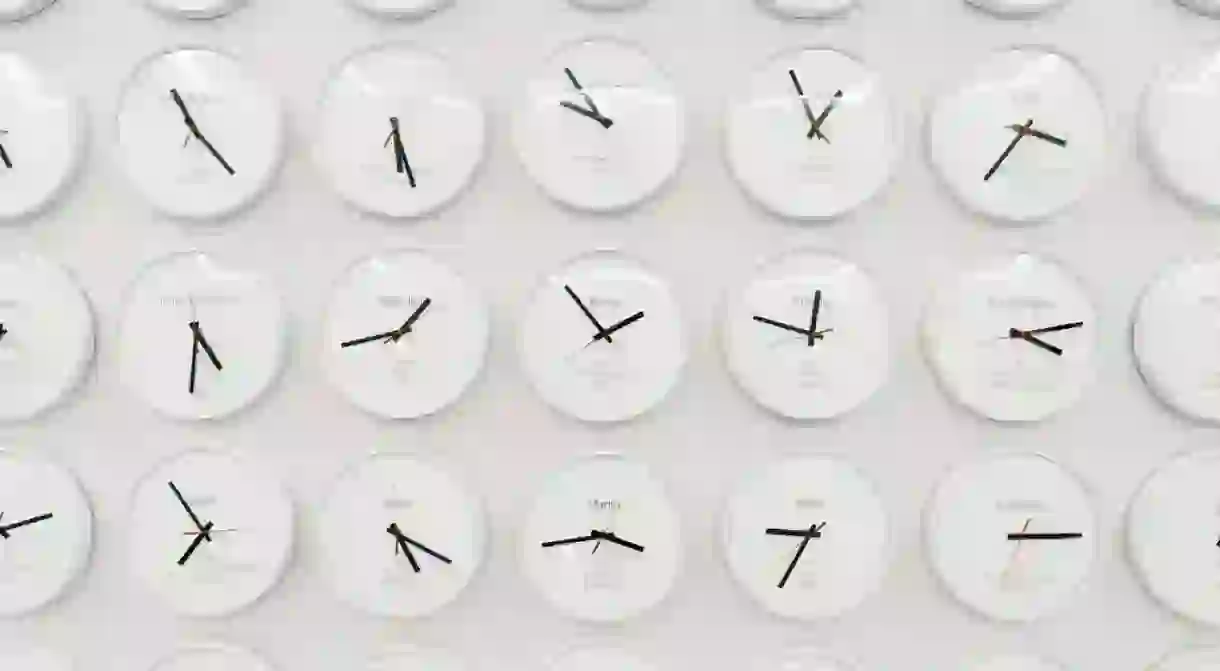South Korean Pavilion Explores National Identity at 2017 Venice Biennale

Featuring the work of Cody Choi and Lee Wan, The Republic of Korea’s National Pavilion at the 57th International Art Exhibition of La Biennale di Venezia illustrates the conflicts and dislocation in modern Korean identity in relation to the wider contemporary world.
La Biennale di Venezia, or Venice Biennale, showcases another side of Italy’s picturesque canal city – a super-modern side, catapulting what many consider a place cemented in the pages of history books to the forefront of the contemporary global art scene. From May to November 2017, the 57th edition of this Venetian festival will exhibit the works of artists from all corners of the globe at 30 national pavilions.

Among them, South Korea’s National Pavilion stands out by offering interesting insight into the concept of national identity through the works of Cody Choi and Lee Wan.
Commissioned by Arts Council Korea and curated by Hyundai Motor’s Art Director, Lee Daehyung, the artists’ joint exhibition entitled Counterbalance: The Stone and the Mountain, focuses on the conflicts and dislocation that the two artists perceive in modern Korean identity, and consists of works that are distillations of human experience.
“Recent world events and trends, such as the rise of right-wing populist movements and general backlash against immigrants have brought issues of identity and difference to the fore,” stated Lee Daehyung. “[The featured artists] are delving into the machinations of global networks as well as into the politics of identity, each offering a different window into our shared world, whilst reflecting on the influence and repercussions of worldwide phenomena on Korea.”

Cody Choi: Exploring cultural identity
Seoul-based Cody Choi rose to prominence on the international art scene in the mid-1990s, after immigrating to the United States. His work has been exhibited in Europe, including a major retrospective curated by renowned American art historian, John C. Welchman, which was exhibited at the Kunsthalle Düsseldorf (2015) and at the Musée d’Art Contemporain de Marseille (2016).
Growing up in the social turmoil of Korean modernization, Choi is representative of a generation of Korean artists who, in the 1990s, engaged in a cultural “tug of war” with the West, with the tensions between assimilation and maintaining a distinct identity.

Responding to these shocks, Choi created his parodic work known as The Thinker. Choi’s reinterpretation of Rodin’s sculpture constructed from toilet paper and the pink American stomach medicine Pepto-Bismol illustrates the artist’s uncertainties as he tried to “digest” Western philosophy as a non-Westerner.
Choi’s work at the Korean Pavilion also includes a major new piece created especially for Venice. Venetian Rhapsody, installed on the façade of the venue, is a kaleidoscopic entanglement of neon signage that, notes curator Lee Daehyung, “borrows freely from the visual ambiance of casinos in Las Vegas and Macao and reflects on the spectacle of global capitalism.”

Lee Wan: Examining society through the individual
Through his work, 38-year-old Lee Wan investigates the hidden lives of individuals exploited by global power structures.
Among his works at this year’s Biennale is Proper Time: Though the Dreams Revolve with the Moon – an installation of 668 clocks, each inscribed with the name, date of birth, nationality, and occupation of individuals the artist met and interviewed while researching the widely differing economic circumstances of working people around the world.
According to Lee Daehyung, “Each clock moves at a different rate that is determined by the amount of time the individual in question must work in order to afford a meal.”

The result is a surreal collection of abstract portraits that also functions as a dizzying multi-sensorial and immersive representation of today’s global inequality.
Another major installation by Lee Wan isMr. K and the Collection of Korean History. This work is based on Lee Wan’s discovery in a Korean antique market of the archive and personal items of Kim Ki-moon (1936-2011), a former journalist and businessman, who, via this work, takes on the symbolic identity of all Koreans of his generation.
Kim Ki-moon, or Mr. K, lived through the defining moments of Korea’s tumultuous 20th century: Japanese colonial rule; the Korean War and resulting division of the Korean Peninsula; the establishment of the Republic of Korea; the dictatorship of the ’60s and ’70s, as well as the country’s exponential economic growth and ultimate transition to democracy. Mr. K’s belongings stand in stark contrast to Lee Wan’s own collection of artifacts, creating a complex narrative of Korea’s modern history.

Individually and collectively, the Korean Pavilion’s Cody Choi and Lee Wan illustrate how individual stories relate to national histories, and subsequently how they are relevant to the rest of the world.
The Korean Pavilion will be open in the Venice Giardini from May 13 to November 26, 2017.













